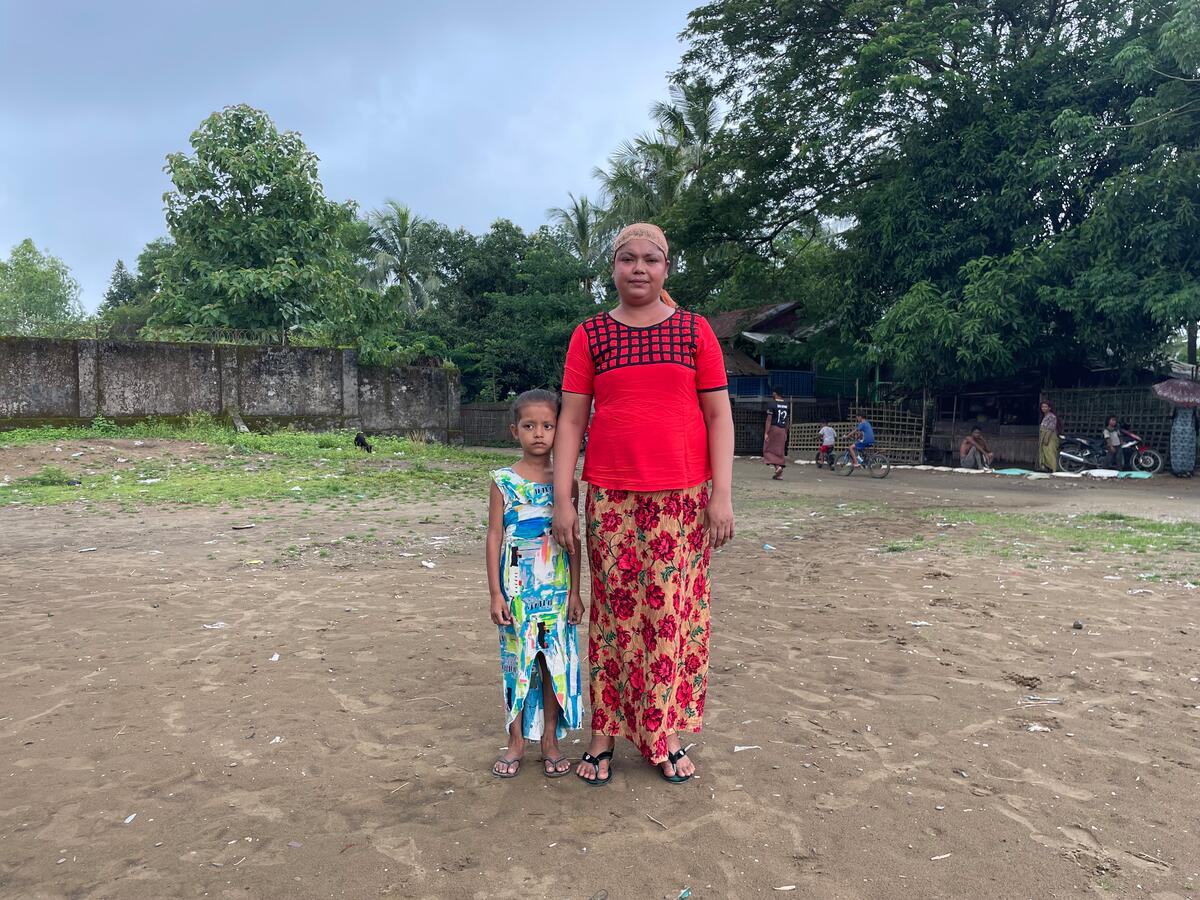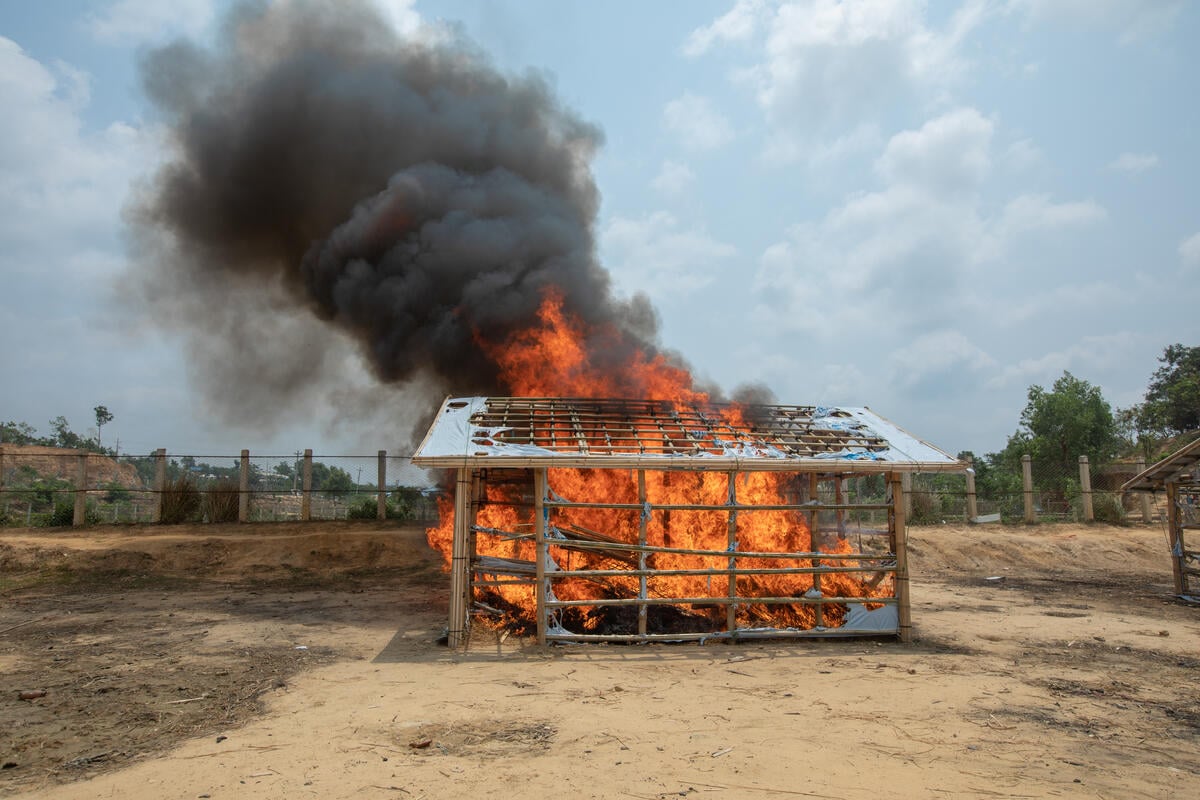Two camps of thought on helping Rohingya in Bangladesh
Two camps of thought on helping Rohingya in Bangladesh

COX'S BAZAR, Bangladesh, January 28 (UNHCR) - In many countries, when you reach the age of 21 you become an adult and must start to fend for yourself. But in the refugee camps of south-eastern Bangladesh, 21 years after the Rohingya first started arriving as refugees, they are more dependent on aid than ever.
Some 30,000 registered refugees in Kutupalong and Nayapara, two government-run camps near Cox's Bazar, are relying on regular distributions of food rations and relief items such as shelter and clothing. Basic water, sanitation and health services are provided by the government, UNHCR and its partners.
While these may sound like luxuries to an estimated 200,000 unregistered Rohingya living outside the camps and to local villagers in this poverty-stricken country, camp residents lament that they cannot work legally or study beyond Grade 5 in the camps' 21 primary schools.
"This is not life," said Shaufiq Alam, a 30-year-old refugee in Kutupalong camp. "I came 20 years ago. If I had been in the village I could have received higher education by now. The camp situation is depriving us of our lives."
The UN refugee agency is working to change that sense of powerlessness, but within tight operational constraints. It works closely with refugee-elected camp management committees, empowering them to mediate disputes and organizing women's training and peace education workshops.
Refugees are also encouraged to participate in the day-to-day running of the camps. Bibi Begum, 30, helps to distribute food rations in Kutupalong every two weeks. Today she is in charge of sugar, stirring a sackful with her hand to loosen the grains before spooning precise portions into waiting plastic bags.
A widow with three children, she is one of seven incentive workers at the food distribution centre who are on a six-month rotation targeting vulnerable refugees like single mothers.
"I get 1,820 taka (US$22.50) per month. It helps with the children's school supplies and I can buy supplementary things," she said. "Usually I make fishing nets for a living, but it is not profitable. I only made 1,000 taka after three months of work."
Vocational training is another important empowerment tool. While the refugees are not permitted to work or to sell things they produce, UNHCR seeks to keep them occupied while teaching them skills like carpentry, soap making and tailoring that they can hopefully use in the future.
At Nayapara camp, Hamida Khatun, a 40-year-old widow with five children, is busy making soap. "I wanted to earn some money so I approached UNHCR to put my name on the list," she said. "I've been doing this for a month, learning how to mix chemicals and use the mould."
Her job today is to cut individual bars of soap to make sure they weigh a consistent 150 grammes each. "I am proud of my soaps," she said. "I get 1,036 taka per month for six months. But it's not enough. There are 14 people in my family - six are registered and get food rations, the rest are not registered and get nothing. The money helps to buy some extra rice but is not enough for extra blankets."
When completed, Hamida's soaps are taken to the Bangladeshi Red Crescent Society to be distributed in the camp's Women's Centre along with some underwear, clothing and other personal items.
The clothing items are made at the Nayapara Women's Centre by refugees attending the tailoring class. "They are usually aged 15 to 25, and rotate every six months," said one of the women in charge. "We teach them skills and keep them busy so hopefully they don't get married off at a young age."
Unfortunately, there are few prospects after the six-month training as most refugees cannot afford to buy their own equipment. Even those who manage to buy a sewing machine find it hard to get raw materials and to market their products. Without regular practice, their skills fade quickly.
In comparison, the unregistered Rohingya living outside the camps appear to have developed their own coping mechanisms over the years. Living conditions are dire in the makeshift sites near Kutupalong and Nayapara, but the markets are busy and people have found informal ways to survive without government or UNHCR support.
This contrast highlights the need to rethink how best to help the refugees.
"UNHCR is good at emergency response, setting up camps quickly in the hope that refugees can return in one to two years," said Dirk Hebecker, head of the agency's sub-office in Cox's Bazar. "But when the situation gets protracted, we need to be able to adjust our strategies."
He added that the international community should work with the Bangladeshi government to shift from focusing on just the two camps - which host just 10 to 15 per cent of the refugee population - to the whole refugee population if practical solutions are to be found to this long-running situation.
By Vivian Tan in Cox's Bazar, Bangladesh









